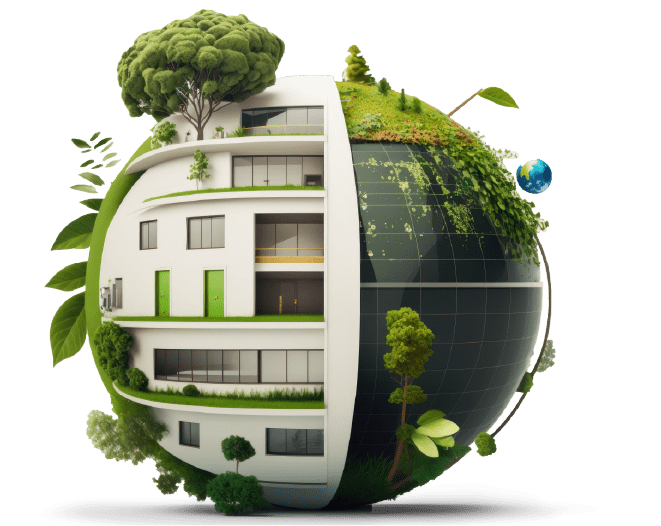High-performance buildings deliver tremendous value throughout their lifetimes to developers, owners, and occupants. Design Performance Modelling (DPM) uses simulation tools to optimise energy efficiency, reduce environmental impact, and improve occupant comfort. All helping you gain a head start on the path to sustainability.
Gain visibility into your building
performance blueprint
By undertaking Design Performance Modeling (DPM), you can predict the impact of your efficiency, building performance, and sustainability initiatives at the planning stage itself, and optimise your plans before construction.
DPM makes use of computerised simulation tools to analyse and assess different parameters of building performance including energy efficiency, water efficiency, lighting, thermal comfort, air quality, and acoustics.
The result is consistent and predictable high performance at your facilities from day one, without needing expensive retrofits or modifications after construction is completed.

Design Performance Modelling (DPM)
Services by Conserve
Conserve can help you achieve sustainable high performance through our in-depth experience and expertise in technology-driven simulations and processes.
Passive Design
Implement building design strategies that maximise energy and resource efficiency, occupant comfort and safety, and overall sustainability with the help of natural forces from the building’s immediate environment.
The key factors to take into consideration for Passive DPM Design are:
Climate
Wind
Light
Thermal
On the basis of these parameters in the immediate environment of your building, it is important to:
Plan your building’s orientation and shape to maximise the use of natural sunlight for lighting, existing wind patterns for cooling, and solar heat for heating
Enable effective natural airflow without depending on active ventilation equipment through features like openable windows, cross ventilation paths, and more
Improve thermal comfort by using insulation materials and building materials like concrete, and by creating share using of sunshades, awnings, and so on
Maximise the use of natural light through appropriate design and orientation of windows, skylights, and other similar features
Active Design
In addition to your passive DPM initiatives, install and incorporate specific equipment or technologies into your built environments to enhance your building performance in terms of energy, water and waste efficiency, and sustainability on the whole.
The key types of equipment or technology to be identified through Active DPM Design are:
HVAC Systems
Artificial Lighting
Solar Power Generation
The selection of appropriate solutions for these active components of your building can be done most effectively through the following methods:
Perform Energy Simulation and Benchmarking by simulating and analysing your building’s predicted performance based on architectural plans, passive design measures and active equipment components planned
Perform What-If Analysis to simulate multiple different combinations of active and passive design components to assess their impact on overall building performance, compare trade-offs between different options, and make a data-driven decision omn the optimal approach
Perform Net Zero Modelling to minimise energy consumption, and maximise energy efficiency, and maximise renewable energy generation through solar or other means, to aim for a Net Zero Energy rating for your building, and to understand the economic implications of this process
Why Conserve Consultants
200+
Design Performance Modeling projects executed
Experience across buildings, factories, residences, schools, hotels, and more
Expertise in using the latest tools and modeling techniques

